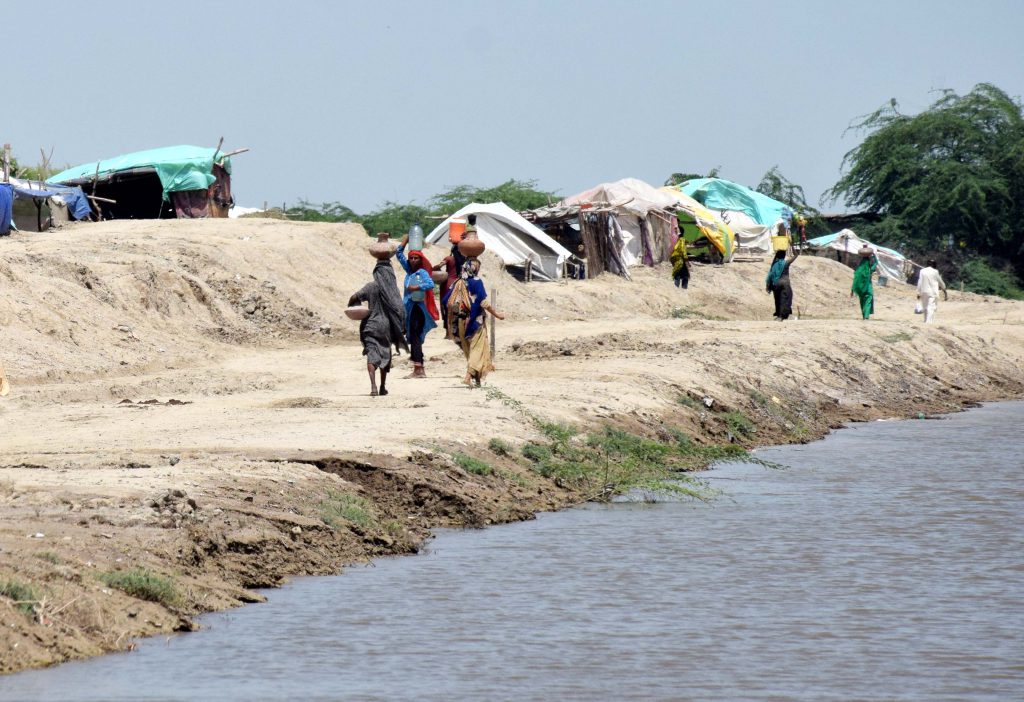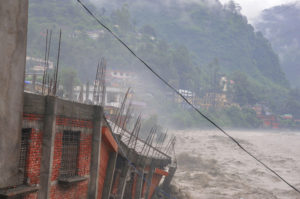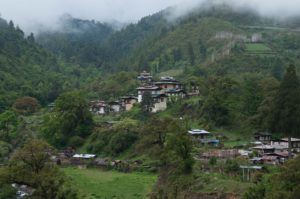“Many [government officials] turned-up and wrote down our names, but we weren’t provided relief,” said Ganga, a peasant whose poverty-stricken community in Sindh has been displaced by floods.
Ratol Kohli, an elderly member of her community, too, looked despondently at every passing vehicle. Their grievance is that, while officials jot down the names of displaced people, many have still not been given relief goods “though some people do provide us cooked rice as lunch” she said.
Extreme weather events have been unkind to Ganga and her community in Pakistan’s second largest province, which this year witnessed unprecedented rains and flooding. While the media’s focus was on the catastrophic urban flooding in Karachi and other urban centres, the August-September spell of rain wreaked havoc in rural areas with poor drainage.
Read: Pakistan’s Sindh struggles to respond to climate change challenges
The disaster has hit the marginalised Kohli, Bheel and Meghwar communities hard, as many of these scheduled Hindu caste members work in farms without ownership of the land they till.

Kohlis, Bheels and Meghwars are considered scheduled castes in India’s caste system which follows Hindu mythology. They are voiceless in the farming sector. They live in substantial numbers in Sindh but largely below the poverty line. While Meghwars opt for other occupations, the Kohlis and Bheels remain in the agriculture sector.
The Sindh government declared 20 districts as calamity hit areas after the recent rainfall. Districts in lower Sindh, including Badin, Mirpurkhas, Umerkot, Sanghar and Sujawal are the worst hit. The Pakistan Meteorological Department (PMD) office recorded 348 millimetres of rainfall in August 2020 in Mirpurkhas, which in the previous year had received 150 millimetres of rain.
The rains and the ensuing disaster are reminiscent of catastrophic floods in the area in 2011, when minority communities suffered tremendous losses yet received no relief.
This year, thousands have lost their produce – cotton and chilli crops – after the excessive rainfall. Selling it would have earned them an income for which they toiled tirelessly as the sun’s heat seared their faces.
A picture of misery
“It’s been around one month [since the rains] but we have been left to fend for ourselves here,” said Ganga, one of millions displaced by rains in district Mirpurkhas which is home to Sindh’s famous mango orchards.
“Do you know how difficult it is to pick cotton and hold a baby simultaneously? We are bearing all this pain and suffering only to earn some money. Merely 10 to 15 maunds [around 40kg] of cotton is left for picking. The rest is lost,” she told The Third Pole. In other years, they have picked nearly three times this amount.
“As if this disaster-driven displacement is not enough, the police forces us to leave sections of the highways and shift to other highlands,” she said.
Even in the third week of September, long after the rains stopped, large swathes of agricultural lands are submerged by standing rainwater. Drainage remains slow, and the poor farmers who worked in what is known as the ‘breadbasket of Sindh’ sit idle.
The men, women, elderly and children sleep under the open sky. Their homes, traditionally made of mud and thatched straw, have collapsed. They lack basic civic amenities and even toilets. Their livestock and cattle suffer as mosquitoes and insects invade the environs soon after sunset, making the animals prone to skin infections.
When their homes flooded, the displaced communities temporarily shifted to highlands and roadsides with whatever belongings they could gather. They have set up improvised tents with empty sacks or polypropylene bags, plastic and pieces of cloth.
“We gathered whatever we could when it started raining heavily on Aug 24 and 25 at midnight,” said Marva Kohli.

Extensive damage leaves government helpless
Sindh Chief Minister Syed Murad Ali Shah wants international aid to ameliorate the situation in Sindh. He put the figure of people affected by rains at 2.5 million. “We need international assistance like the kind we got in 2010, when the Indus river was swollen and experienced super floods, and then in 2011 when torrential rains visited Sindh,” he said.
A September 19 assessment by his government’s Provincial Disaster Management Authority (PDMA) put crop damage at 1.128 million acres and affected people at 2.48 million in Sindh. It reports 151 people dead, including 49 women and 23 children. The survey suggested nearly 30,000 homes were damaged and about 50,0000 cattle perished.
Among the damaged crop, cotton – an exportable commodity – and chilli are badly hit. The province, which produced 4.2 million cotton bales in 2009-2010 has barely come close to that figure in recent years. Production figures for 2010-2020 show a 40% decline.
The Pakistan Cotton Ginners Association’s senior vice chairman Haresh Kumar puts the overall damage to cotton crop in 2020-21 at Rs 5 billion [USD 30.3 million].
Progressive farmer and the leader of a vibrant growers’ body, Syed Mehmood Nawaz Shah, too, said that while the value of Sindh’s agriculture produce in 2020-21 for summer crops is about USD 7 billion, ‘“close to USD 1 billion has been lost in recent rains and flooding”.
No relief for farmers
For the poor farmers, more hardship lies ahead.
“We have lost the produce we had grown. We will lose our share [in the crop] as it will be adjusted by the landowner towards the cost of input he invested in the crop,” said Peeru Kohli.
The immediate rehabilitation of haris (bonded farm hands) is a distant dream. Barefoot peasants enter submerged cotton fields to pick the remainder of cotton from dawn to dusk for Rs 400 (USD 2.40) per 40kg, thus exposing themselves to infection and insects.

The hari-grower relationship is not governed under any law. Haris are not registered under the record of rights as permanent tenants as per Sindh Tenancy Act 1950. In practice, peasants share expenses incurred by the landlord from the sowing to harvesting stages of the crop. All inputs are purchased by the landlord or through the area’s conventional lending system.
The local lenders charge interest at rates much higher than banks. For instance, if a local lender provides a urea bag at Rs 17,500 (USD 10.60) on credit, he will charge USD 4.5 over and above the price as interest. The borrower/farmer has to sell his produce to the very lender as a precondition. Usually, a peasant’s loan is adjusted once the crop is harvested and sold in the market or to the same lenders who then offer a lower price for the crop along with deductions. The entire practice undermines the monetary interests of haris, who have to make do with a meagre share in profit after the deduction of expenses.
According to Peeru’s calculation, the landowner invests around Rs 30,000 (USD 181) per acre in the cotton crop which he or other peasants are supposed to share equally. “With the considerable chunk of cotton or chilli gone, we end up getting zero share in the profit,” he said, adding that he will now have to ask his landlord to lend him money.
“My community fellows will be borrowing more money to earn a living till the new crop is sown and harvested.”

“Scheduled caste members can’t buy assets or even read their religious books in line within Hinduism. They are the most persecuted community within Hindus,” said Dr Sonu Khangarani, recipient of Tamgha-e-Imtiaz, Pakistan’s highest civilian honour, for his social work in 2010. “I, too, hail from the Meghwar community,” he said.
“They can’t break this vicious circle,” he added. He urged the government to build villages on highlands for these landless peasants under the federal government’s ‘five million houses’ scheme and to give them ownership of land.
Under the Sindh Industrial Relations Act 2013, peasants are defined as “industrial workers”. But seasoned labour rights leader Nasir Mansoor said that unless rules are framed in line with the 2013 Act, it remains irrelevant. “These are rules which will provide a framework to get haris enrolled under social security laws…but the government’s will is missing.”








